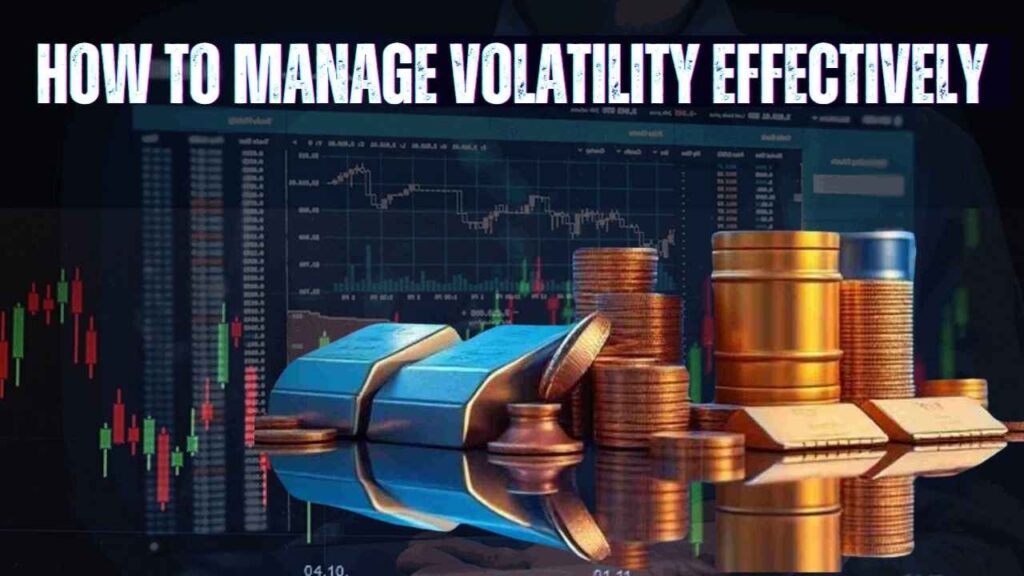Commodities like oil, gold, silver, crops, and industrial metals are key drivers in international economies. But these commodity markets are characterized by extremely volatile price fluctuations due to factors such as geopolitical tensions, supply-demand mismatches, weather events, and currency movements. For traders, controlling volatility is the secret to protecting investments and achieving maximum returns. This guidebook gives an exhaustive overview of commodity trading risk and best practices and measures to effectively handle such risks.

Key Risks in Commodity Trading
1. Market Volatility
Commodity prices can swing dramatically in a short period due to:
- Supply Disruptions: Natural disasters, geopolitical conflicts, or production cuts can lead to sudden price spikes.
- Demand Fluctuations: Changes in global economic activity, seasonal trends, and shifts in consumer behavior often affect commodity prices.
- Speculative Trading: High levels of speculative activity can cause excessive price volatility in the short term.
2. Leverage Risks
Many commodity trades involve high leverage, which can amplify both gains and losses. When markets move against you, leveraging can result in substantial losses, making it essential to use leverage cautiously.
3. Currency Risk
Since commodities are typically priced in U.S. dollars, fluctuations in currency exchange rates can impact the price of commodities in other currencies, affecting returns for international investors.
4. Regulatory and Policy Risks
Government policies, trade regulations, and changes in fiscal policies (e.g., tariffs or subsidies) can significantly influence commodity markets. Sudden regulatory changes can lead to unpredictable price movements.
5. Liquidity Risks
Some commodity markets may experience low liquidity, meaning large trades can have a disproportionate impact on prices. This can result in unfavorable entry or exit points, especially during volatile periods.
How to Manage Commodity Trading Volatility
To steer clear of the inherent dangers of commodity trading, try the following:
1. Diversification
Diversify your investment portfolio by not investing all your capital in one commodity. Dividing your investments among different commodities (e.g., metals, energy, agricultural products) can help reduce the risk of negative price movements in one specific market.
2. Use of Stop-Loss Orders
The use of stop-loss orders is a practical method to handle downside risk. Stop-loss orders automatically dispose of a security once it falls to a predetermined level, curtailing losses when the market is declining sharply.
3. Position Sizing
Carefully manage your position sizes to ensure that no single trade has the potential to erode a significant portion of your portfolio. This means allocating only a manageable percentage of your total capital to each trade, especially when using leverage.
4. Hedging with Derivatives
Employ derivative products like futures and options contracts to hedge against losses. Hedging methods can offset the risk of price movements in a negative direction through a financial buffer.
5. Regular Market Analysis
Keep abreast of market trends, world economic indicators, and geopolitical changes. Regular technical and fundamental analysis can assist in forecasting market movement and adjusting trading strategy accordingly.
6. Risk Management Framework
Establish a strong risk management system involving establishing definite trading objectives, specifying risk-to-reward ratios, and having disciplined trading habits. Regularly evaluate and refine your strategies according to market conditions and performance.
Final Thought
Commodity trading presents thrilling possibilities, but high volatility and sophisticated risk factors demand discipline. Through diversification of your portfolio, stop-loss orders, and hedging, you can manage risks in commodity trading more effectively and safeguard your investments. Successful trading is not only about capturing gains but also about managing losses successfully.
Learn all you can, stay informed on market trends, and opt to consult professionals if you’re new in commodity trade. With a proper risk management plan, you can boldly drive the risky commodity market and set yourself up for long-term success.
Frequently Asked Questions (FAQ)
Q1. What causes volatility in commodity markets?
A: Commodity market volatility is largely caused by fluctuations in supply and demand, geopolitical conflicts, natural disasters, and speculative trading. These can result in sudden changes in commodity prices.
Q2. How does leverage affect commodity trading?
A: Leverage enables traders to manage larger positions using smaller amounts of capital, potentially increasing gains and losses. Leverage must be used with care to prevent deep losses in times of market volatility.
Q3. What are stop-loss orders, and how do they help?
A: Stop-loss orders are programmed orders that sell a security if it reaches a specified price, capping the potential loss on a trade. They are key risk management tools in unpredictable markets.
Q4. Can hedging strategies reduce commodity trading risks?
A: Hedging through the use of derivatives such as futures and options can counter potential losses by giving protection against negative price movements.
Q5. How often should I review my commodity trading strategy?
A: It is suggested that you periodically review your strategy, at least once a month or every quarter, in order to keep up with the changes in the market and check if your risk management techniques are still effective.










